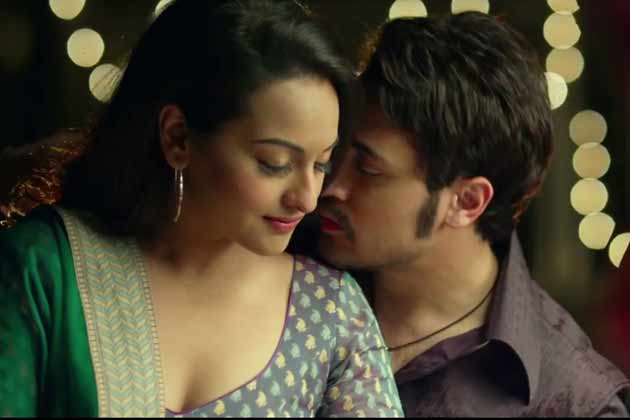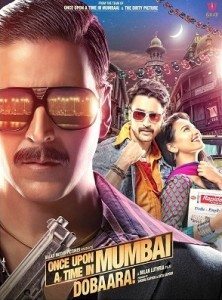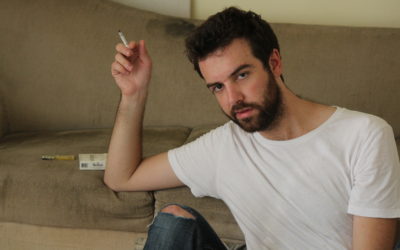Once Upon Ay Time in Mumbai Dobaara! – 3/5
Once Upon Ay Time in Mumbai Dobaara! is the much-awaited sequel to Milan Luthria’s 2010 hit which featured Emraan Hashmi. However the moody pseudo-realism of the first film is replaced here by something much more crowd-friendly – pure masala.
It would be a folly to think that this film would in any way resemble the first. A sequel, yes, but not a continuum. That fact was established from the get-go, with the glossy, wide-grinning poster promising a song-and-dance fuelled ride through the Maximum City’s underworld. For those who haven’t seen the previews, we are told that “this time it’s personal” – a reference to the central plot. And by personal, do they mean gangster-driven revenge over a murder in the family? Do they mean a personal vendetta between Dons? Do they mean an intrinsic interest in controlling a part of India’s biggest city? No – they mean Sonakshi Sinha, who gets caught in a love triangle between head gangster Shohaib (Akshay Kumar) and his protege Aslam (Imran Khan). Once Upon Ay Time in Mumbai Dobaara! is much less an Indian version of The Godfather II than it is an appropriation of the standard, vapid romances we’ve seen on screen countless times before.
Sonakshi Sinha does well in her role as the ditzy Jasmine, trying to make it big in Bollywood. Akshay Kumar is believable as the fearsome, tyrannical Shohaib, and Imran Khan could win some new fans with his portrayal of Aslam. However the three stars (and, really, the whole cast) are let down by sloppy scriptwriting and seriously ridiculous moments. The scene in the hospital elevator actually had some of us in the audience laughing – and turning to each other asking “is this for real?”. Writer Rajat Arora gets no stars for the plot, and Milan Luthria must wear some of the blame for agreeing to direct such scenes. What Luthria does do well, as we have seen time and time again (e.g. – The Dirty Picture), is produce an atmosphere of superficial joy and frivolity set

Imran Khan and Sonakshi Sinha shine in Once Upon Ay Time in Mumbai Dobaara!, but are let down by a weak and often silly script (Image: IBN)
against a backdrop of growing dread. Similarly, Luthria effortlessly sets the scene for a period piece – the India of the 1980s and the early 1990s seem to have left an indelible impression on this director, and we love how it plays out on film. Pritam’s music in this film is a wonderful score of Muslim Indian-style melodies, although their execution on screen is sometimes a little clunky (like the song ‘Tayyab Ali’, which seems to come out of nowhere).
On balance, while this will no doubt entertain the crowds, it leaves the critical viewer somewhat underwhelmed. Apart from the occasional slow-down in pace, you won’t be bored, but don’t expect anything like the borderline-arthouse quality of the first instalment in this series. One gets the feeling that Luthria was trying to recapture the magic (and success) of The Dirty Picture, and a second look at the Once Upon Aye Time in Mumbai Dobaara! poster reveals some striking similarities. While his latest offering may yet rival The Dirty Picture for monetary success, the masala mix just didn’t work this time – and we noticed.






0 Comments